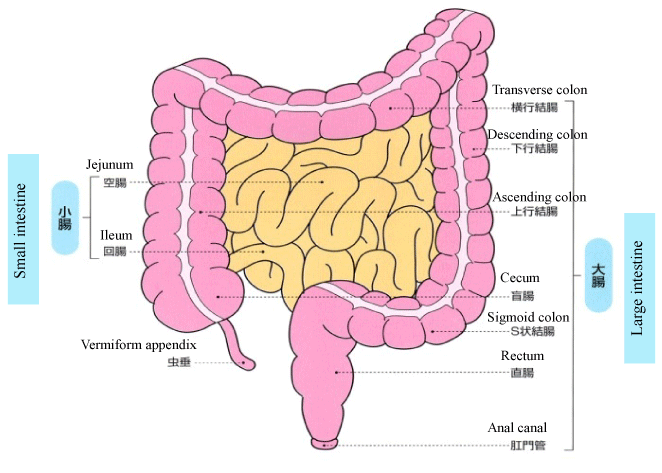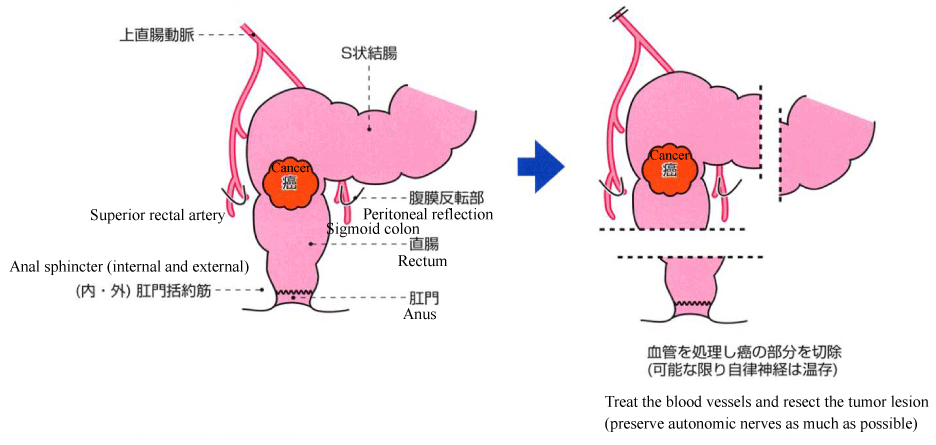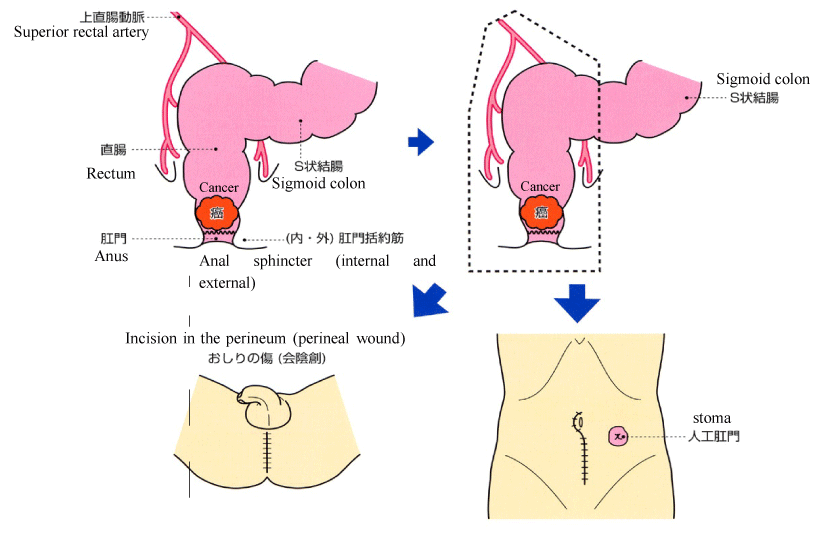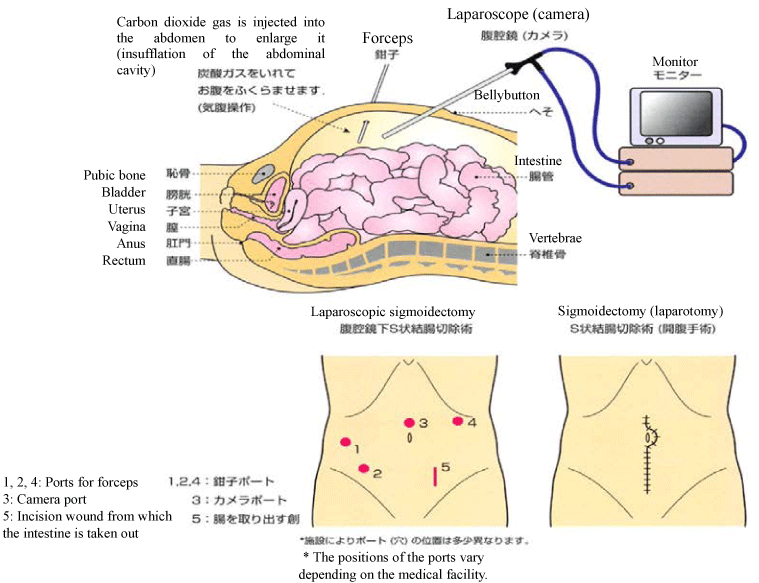Laparoscopic colon resection
- Fukuyama Medical Center performs more than 150 cases of colorectal cancer surgery annually. About 70% of these cases are performed by laparoscopic surgery.
- We are certified by The Japan Society of Coloproctology, and our full-time staff include five specialists and three medical instructors, who are actively engaged in academic study.
- Fukuyama Medical Center is a central general medical institution of the Bingo area. To provide the highest standard of medical care, we cooperate closely with other departments, including Gynecology, Urology, Plastic Surgery, and especially Gastroenterology.
- Our hospital is designated as a regional secondary emergency hospital. We provide 24-hour emergency medical care and can respond to abrupt changes of patients’ conditions.
Laparoscopic colon resection
Postoperative complications associated with laparoscopic surgeries for colon cancer and rectal cancer, their incidence, and handling of accidental disease
In general, there is a possibility that an accidental injury or complication may occur after surgery. Here, an accidentaldisease refers to damage that can occur at a certain rate, and it is completely different from what is called “medical malpractice” or “error.”
Accidental disease and complications associated with laparoscopic surgeries for colon cancer and rectal cancer
- Circulatory failure: A condition in which blood pressure or pulse is unstable.
- Bleeding: A blood transfusion or procedures to stop bleeding (including surgical operations) may become necessary.
- Respiratory failure:
If severe respiratory failure occurs, endotracheal intubation and mechanical ventilation management will be required. The most effective preventive measure is to start standing up and walking from the early postoperative period.
- Pneumonia:
This is treated with postural drainage or antibiotics.
- Infection in the surgical incision site and intra-abdominal abscess:
Percutaneous tube placement or performing drainage by laparotomy may become necessary.
- Anastomotic failure:
Intestinal contents can leak out from an anastomosis. Food intake may be delayed leading to prolonged fasting or additional surgery may be required (a temporary colostomy may be created) in some cases.
- Deep vein thrombosis and pulmonary infarction:
Hematomas (blood clots) can form in the veins, and become lodged in the blood vessels of the lungs (commonly referred to as economy class syndrome). A massaging device can be attached to the legs as a preventive measure.
- Intestinal obstruction:
Intestinal paralysis or adhesions may cause an obstruction. If it is not resolved by fasting, a re-operation may become necessary in some cases.
- Postoperative mental disorders:
The patient may become violent, fall out of bed, or fall into a critical condition by pulling out an IV drip or tube by himself/herself. We may use physical restraints or give sedative drugs out of necessity.
- Death due to surgery:
As surgical techniques and procedures continue to be improved, these surgeries have become safe, with an operative mortality rate of less than 1% (about 0.8%). Nevertheless, death can occur in a worst-case situation.
Surgery for Colorectal Cancer
- Surgery for colon cancer
The intestine is cut at positions 10 cm from the tumor, the lymph nodes are resected in a fan-like form, and the intestine is anastomoused. Operation names include right hemicolectomy, transverse colectomy, left hemicolectomy, and sigmoidectomy, depending on the type of intestinal resections.


- Surgery for rectal cancer
- 1) Anterior resection
- The rectum on the anal side is cut at positions 2 to 3 cm from the tumor, and a device is used to make an anastomosis after the resection of the rectum.
- 2) Rectal amputation
- If the tumor is adjacent to the anus, the rectum is resected together with the anus and a permanent stoma is created using the oral side of the sigmoid colon.
Anterior resection

Anterior resection
 Rectal amputation
Rectal amputation

- SLaparoscopic surgery
Carbon dioxide gas is injected into the abdominal cavity to enlarge it. While observing the abdominal cavity with a laparoscope, we insert long, thin instruments through several small holes and separate the intestine. We then pull the intestine out from a 3 to 5 cm incision wound in the skin, cut it off, make an anastomosis, and put it back into the abdominal cavity. The incision is small, so the pain of the postoperative wound is mild, which will enable quick recovery and early discharge from the hospital.

Radiological Diagnosis Department
Outpatient Guide
Reception Hours
○First-Time Patients / Returning Patients (without appointment)
8:30~11:00
○Automated Reception for Returning Patients (Reservation Only)
8:00~17:00
First-time patients are expected to bring a letter of introduction. For more information, please refer to the Outpatient Guide
Contact
+81-84-922-0001
507-kokusaisien@mail.hosp.go.jp
E-mail



 Rectal amputation
Rectal amputation

